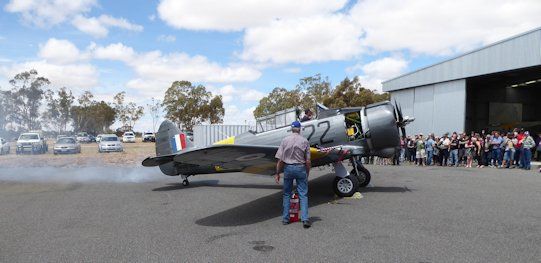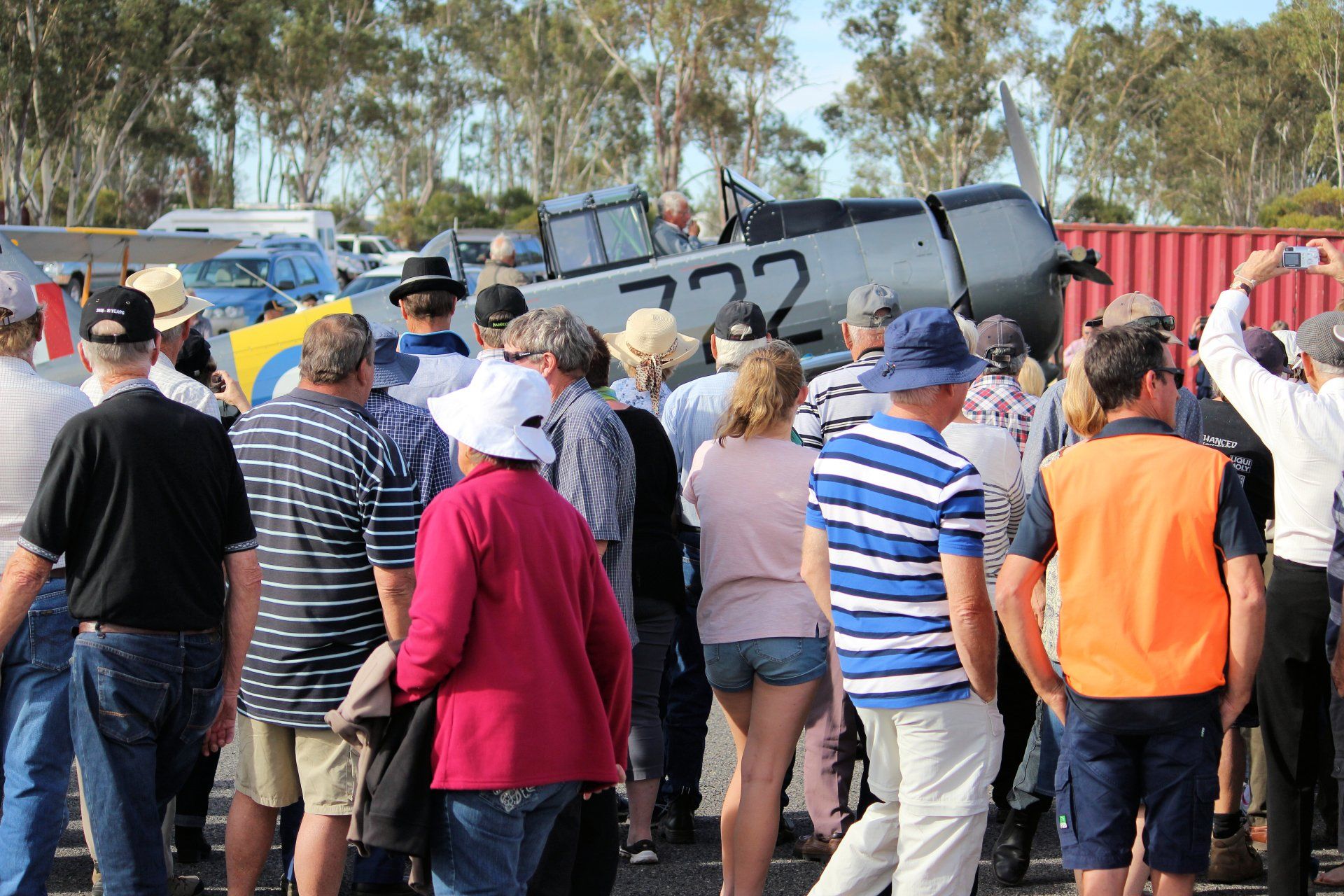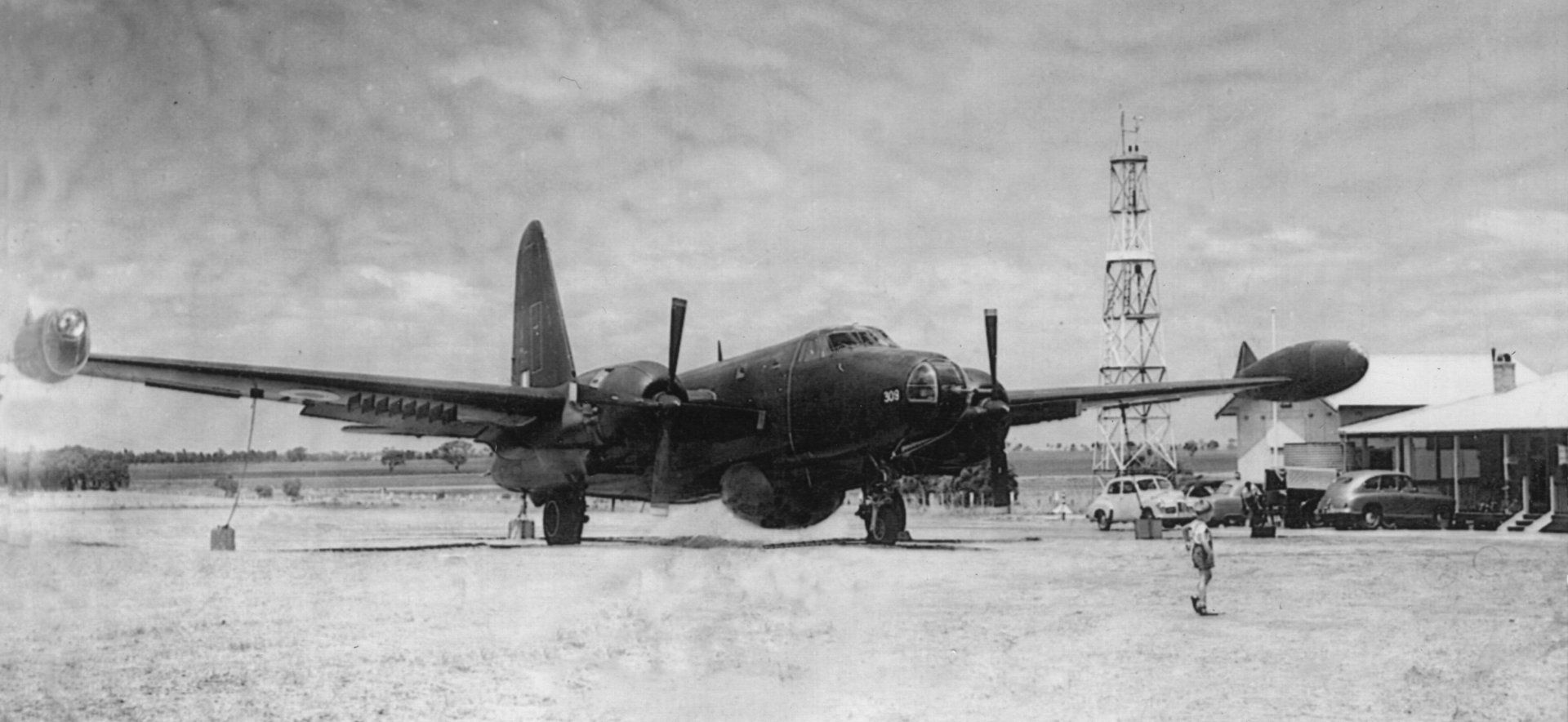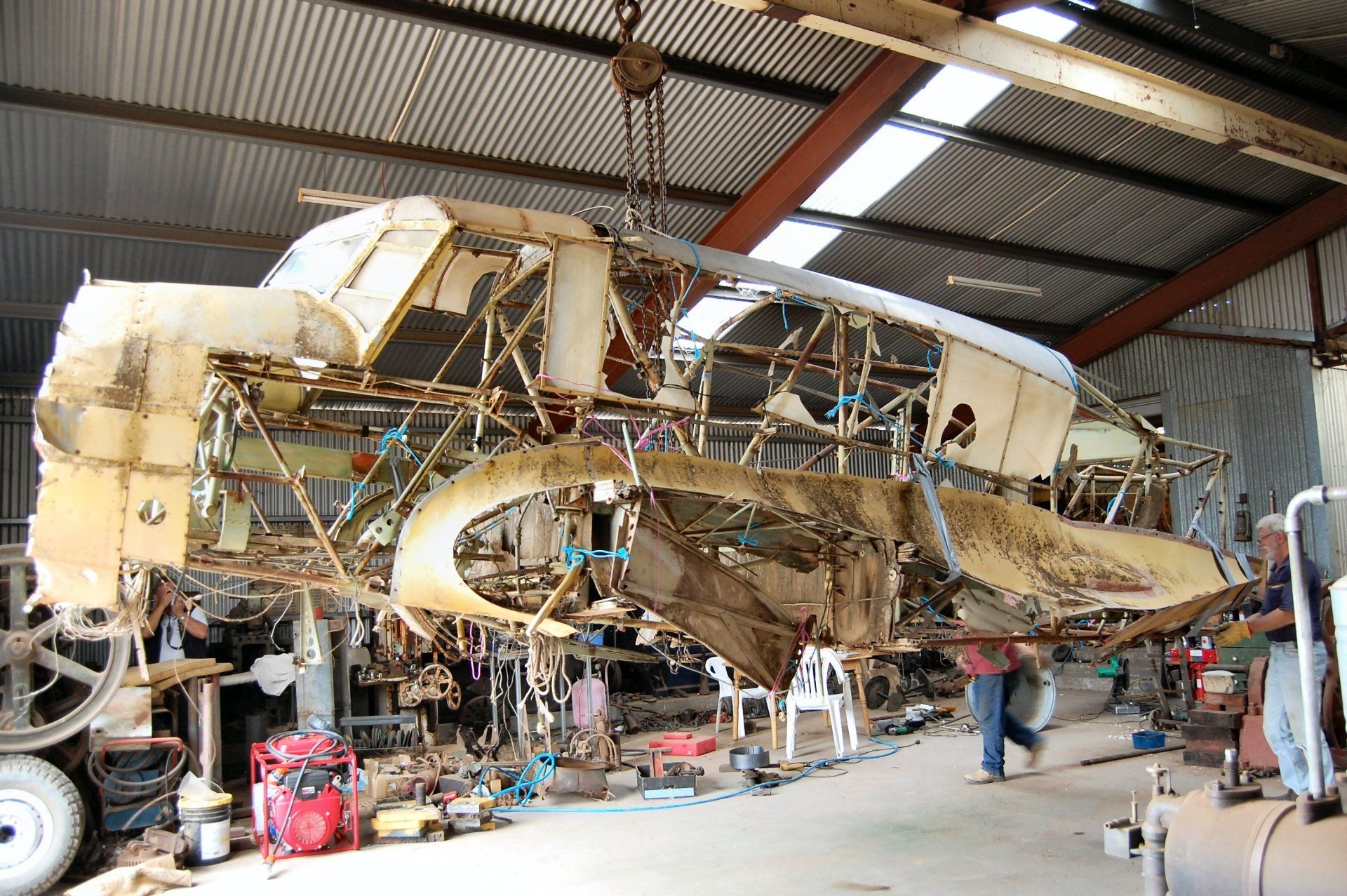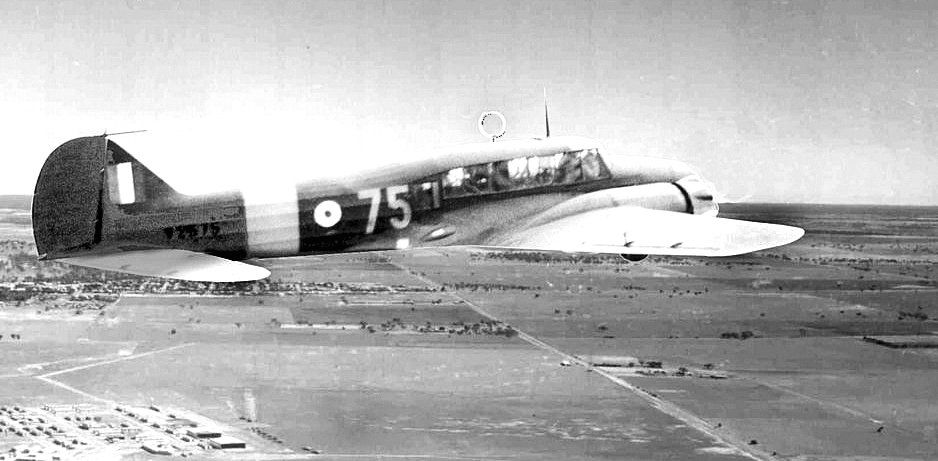NHILL ANSON NEWSLETTER No 31
Issue No 31. 23-04-2015
The story of an RAAF Flight Commander at Nhill who is seconded to fly for QANTAS

Highlights in this newsletter:
- Air Show Website
- Stinson at Nhill
- Nhill in 1942
- Free Camping
- Group visits
Nhill Air Show Website.
The Nhill Air Show committee have launched their website with the assistance of XL Creative Web Developers. The site is still in the early stages of development but it is expected that much more information will be available soon. The Nhill Air Show Facebook page has been operating for some time.
The Nhill Air Show is promising to be one of the largest events ever held on the Nhill Aerodrome. Aircraft have already been promised for the show and interest is building from far and wide. The Air Show website can also be accessed from the NAHC Website.
Stinson Aircraft lands at Nhill.
Earlier this month I was working at the Nhill Aerodrome when a beautifully restored Stinson aircraft landed at Nhill. While talking to the owners I mentioned that the NAHC had a photograph of a Stinson aircraft that landed at Nhill in 1937. The photograph was found and discussed and I was amazed to hear that the aircraft that landed at Nhill was still flying and had been at Echuca a couple of days earlier. It would be great to see it fly into Nhill again someday. Perhaps at the Nhill Air Show.
1937 Apr 19 from Nhill Free Press. New Nhill Aerodrome The new aerodrome,
with an area of 40 square chains, which has been selected and surveyed by the Commonwealth Government, is situated 1.25 miles north of the town adjacent to the Netherby Road and north-west of the present aerodrome. It will be one of the largest in Australia, and provides for an 800-yard runway in any direction, has a natural drainage, and is comprised of red soil which will not be affected by wet weather. Only a small portion of the road running north to the ‘drome from Nelson Street west will require to be metalled. The level nature of the ground and its spaciousness renders it ideal for aviation, and it is much better than the one at present in use on Mr. Blackwood`s property.
A meteorology station will be established on the new aerodrome and beacons erected for night flying. Last Friday Mr. J.D. Morton, Victorian aviation officer, and Mr. J.A. Hennessy, of the Vacuum Oil Coy., arrived at the aerodrome and made an inspection of the ground. From Kevin O’Reilly’s book, “In Just Five Years”.
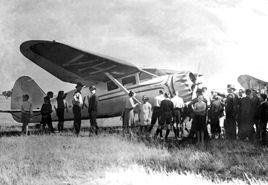
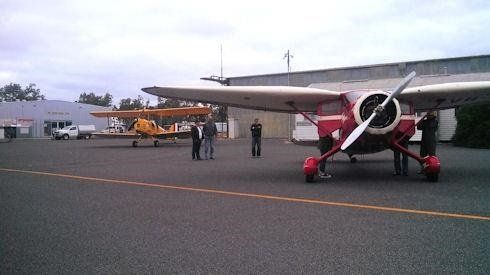
Nhill in 1942 by Rex Senior.
I reported to the Astro-Navigation base at Nhill in the third week of June, 1942, and became Flight Commander of ‘A’ Flight, in charge of an engineering ground staff and a flight of ten aircraft. The C/O of the base was W/Cdr Frank Headlam, who, like myself, had been on operations. As the senior flight commander I had, in addition to the squadron aircraft, a Tiger Moth on my personal charge. This was used for maintaining aerobatic skills and also for cheap air transport between bases. I must admit that, having this as my personal aircraft, allowed me to enjoy a freedom of flying which was way beyond normal. I enjoyed being able to fly the Tiger for pleasure and on one occasion, despite Frank Headlam’s strict orders to the contrary, smuggled the station nursing sister onboard as passenger and gave her the thrill of some aerobatics.
The base operated Ansons, used mainly for the training of student navigators, and involving triangular cross country flights across the inland of Victoria and N.S.W. However in addition to training the student navigators our unit was also an active Southern Australian Air Force Squadron. Although operating from a peaceful base we were still on active service and, on a number of occasions, were called on to carry out anti-submarine patrols and shipping searches off the South Australian coast, after refuelling from the R.A.A.F. base at Mt. Gambier.
I remember one such anti-sub search from Mt. Gambier when we flew down at night and, despite dire warning of consequence if any aircraft was damaged I, the senior flight commander, managed to contact wing tip to wing tip with the C.O.’s plane while parking. Fortunately, despite the dire warnings, Frank was in a forgiving mood. In this function I was the Commanding Officer of 97 Reserve Squadron, and at the time of the Coral Sea Battle, my reserve squadron was put on urgent alert notice (I think from memory several hours) to be called on to depart for action on the New Guinea scene.
With one forward mounted gun and the ability to carry only minor 25lb bombs we would have been on a suicidal action, but the crisis was so real that even such inadequate aircraft as the Ansons were placed on standby. As a Reserve Squadron we practiced formation flying, bombing and gunnery with the camera guns. Formation flying was a nail-biting experience, with wing tips at times coming perilously close. Having no inter-aircraft communication the junior pilots, who were continuing their flying experience at the Navigation school prior to posting to active duty, tried to formate on my aircraft, leaving me often between a prayer and a fright.
Another of my duties as flight commander involved the checking out of the new pilots, continuously passing through the school, each having to be efficiency rated in both day and night flying. One of the friends that I made at Nhill was Don Taylor, flight commander ‘B’ flight. Late in 1942 Don was posted to Beaufighters and went to Darwin, where he was engaged in raids on the Japanese in Timor. Unfortunately, he was later killed following a raid. He had returned to refuel and, on takeoff, lost an engine cowling causing his aircraft to crash. At that time his wife lived in Perth, to which I had just been sent by Qantas and, ringing to say ‘Hello’, I was distressed to learn of his death a few days previously.
Nhill was a very small country town at the time of my service there and as the airfield was located just outside its boundary both the townspeople and the Officers became quite friendly, with a lot of joint entertaining. One of the local farmers had a small lake on his property to which he invited Frank Headlam to shoot a duck. This resulted in the W/Cdr bringing back a duck he had shot and which he intended to enjoy for a meal. The duck, ready for cooking, was placed in the Mess refrigerator but disappeared from there overnight. The resultant inquiry was brought to a head when the equipment officer, one of the older officers, admitted to having ‘pinched’ the duck, not knowing that it had belonged to the C/O.
Training flights were carried out both by day and night, although, being an Astro-nav. training school the night flights predominated. These were frequently over a course from Nhill to Mildura or Swan Hill but at times ranged far and wide to other training stations and occasionally involved overnight stops. The Anson was an excellent aircraft for the training of navigators with clear visibility enabling the easy taking of an astronav shot.
Take-off, for the pilot, was not so easy, with forty-eight turns of the handle necessary to wind up the undercarriage and the same number to let it down. The student on the flight was often the recipient of an instruction to “wind ‘em up”. A searchlight beacon at Nhill was turned on for night training flights and over the flat terrain of Victoria this was visible for such a long way that, for the pilot, the homeward leg from a triangular cross-country was easy navigation. Point the nose at the light and follow it! In December 1942, I took the opportunity of doing the Astro-navigation training course myself. This proved of enormous benefit to me later, when as a Qantas pilot, doubly licensed as pilot or navigator, I was able to act in either capacity on the Indian Ocean crossings.
During 1942-3 there was a much prized and fought over object known as “Hitler”, this being a photo of that gentleman framed in a wooden toilet seat. At that time there were a number of training bases spread across South Australia, Victoria and N.S.W. and each of these attempted to seize and keep this prize. On one occasion when it was in the possession of the Mildura base we carried out a navigation exercise to that station, staying over-night in their Mess. “Hitler”, protected by a circuit such that any movement of the mounting caused an explosion outside was hanging on the Mess wall. An apparently careless knock with a billiard cue by one of us produced the explosion, following which the prize was no longer protected.
After apologising for the ‘careless’ knock and waiting for a time to allay suspicion ‘Hitler” was seized by our team and hastily transferred to one of the Ansons, with motor running warmed up and ready for immediate departure. Despite a vehicle being driven onto the runway the plane’s take-off was successfully achieved and for a short time the prize hung on our wall at Nhill. Some weeks later we lost it to another team. This time several officers arrived on the night train to Nhill. This arrived in the early hours of the morning and they phoned to the base for transport, stating that they were new postings to the station. With good timing an aircraft landed, picked them up and departed with ‘Hitler’ before the purpose of their visit was realised.
From base to base across Southern Australia this game went on, until eventually it became so dangerous that Air Board intervened, with an order that the prize be surrendered to Melbourne, and the competition permanently stopped. Recounting the tale here makes me realize the “don’t give a damn” atmosphere in which we all lived. It was enough that we had today and there was no worry about tomorrow. My office in the Flight building was at the base of the aerodrome control tower. This rose some twenty odd feet to a landing on which was a small glass enclosed room. The climb up the vertical ladder was good exercise and I sometimes occupied the control just to watch the aircraft operations. It was also easy to fire a Verey cartridge from my office window, up alongside the tower, causing consternation for the occupant of the control room. We were all somewhat “Troppo” in those days.
Although the mechanics were mainly a conscientious and hard-working team there were episodes of aircraft becoming unserviceable, with the occasional engine failure at take-off. After several such issues I introduced the instruction that both fitter and rigger had to accompany me on the test flight following a service. Such episodes of failure rapidly halted, and while I was there these episodes no longer worried the pilots. From time to time the scientists working for the Defence department came up with ideas that they needed to trial, and on one of these occasions I carried an experimental ‘flying’ bomb, equipped with miniature wings, to be tested on a lake further north of our base. Whether the tests were successful or not I never learned, my job being simply to ferry the experiment to its destination. On another occasion I had, for reasons unknown to me, to ‘smoke’ bomb a road intersection in the outback but this time I did have the satisfaction of seeing the bomb accurately mark the target.
The summer of 1942 was very hot in the Nhill district and with no such equipment as air-conditioning we spent many days of discomfort. I recall one extremely hot day when I loaded one of our planes with as many passengers as could be carried in such conditions and climbed to eight thousand feet for an hour or so. The temperature change at that height was sufficient to make us happy for the rest of the day.
In January 1942 Frank Headlam decided that we would carry out a squadron navigation exercise to Ceduna, via Port Lincoln, returning through Kingscote on Kangaroo Island. This we did, with the C/O flying as my co-pilot and enjoying a brief relaxation fishing during an overnight stop at Ceduna.
Life on the training station was pleasant despite the war to our North, but in our thoughts at all times was the attack by the Japanese. Although some of our actions appear in retrospect to have been very light hearted, in their own way they all contributed to our training and preparedness. In January 1943 Air Board sent a notice to the various training stations inviting applications for pilots wishing to transfer to Civil Aviation, on loan for a period of twelve months. The stated reason was that Civil Aviation in Australia was in a state of near collapse, and pilots were needed to maintain its viability. Off the record we understood that the Americans were trying to take over control of Australian Civil Aviation and to prevent this occurring the Government needed to transfer pilots to this area of aviation.
As I felt in a backwater at Nhill I, together with several others, sent in my application and found that, with my previous flying boat experience, I was allotted to Qantas. On March 9th, 1943 I was transferred from the R.A.A.F. and joined Qantas Airways as a pilot. Qantas operations were based in Townsville, flying to Port Moresby, Darwin, Groote Eyeland and Milne Bay. Although operating in the active war zone at the time of the attacks on Port Moresby we flew as civilian crew in unarmed aircraft, taking supplies to New Guinea and bringing the wounded home on the return flight.
Editor’s Note:
Rex Senior was seconded to QANTAS and continued flying in civilian guise. He went on to be one of the “double sunrise” pilots flying Catalinas between Perth and Colombo after the UK telegraph cable was cut. He did not appreciate receiving a white feather by someone who did not know what he was doing for the Australian war effort.
More background information from an article titled “Pioneering the Skies by John Stackhouse”. Qantas also went to war. Its skilled long-distance flying boat crews took delivery of Catalinas from the US for the RAAF, making the Pacific crossing virtually routine. In Papua New Guinea, Qantas civilian crews were among the "biscuit-bombers" that supplied the troops. But the epic of all aviation epics was the long flight from Perth to Colombo, which kept open air links with Britain throughout the Japanese push into the Pacific. The slow Catalinas were in the air for up to 30 hours, their few priority passengers awarded "the order of the double sunrise" because they would see two dawns.
On February 15th 1943, following my application to transfer to civil aviation, (as suggested by the Air Board notice), I flew Anson AX-634 from Nhill down to Essendon for an interview with Civil Aviation representatives. Together with me on this flight were F/O Flynn and Sgts. Solly, Newland and Pierce. At Essendon we met the various interviewers and John Solly, Ivan Pierce and I were allotted to Qantas as future pilots. We stayed overnight in Melbourne and returned to Nhill next day to continue normal duties.
Following our discharge from the R.A.A.F. on the 9th March, we immediately joined the Qantas staff on the 11th of March. On March 12th, with Capt. W. Crowther in command, and with First Officer Gaston and radio officer Clark we flew out from Rose Bay in the Short Empire VG-ABG (the ‘CORIOLANUS’) en route for Townsville, stopping at Brisbane and Gladstone. Suddenly I was back in the war.
As members of the Qantas crews we lived in the American Officer’s mess in the main hotel in Townsville. This was a pleasant lodging, with comfort and good food, although the latter differed considerably from the normal Australian taste to which I was accustomed. While the rest of Australia was on food rationing no such condition existed in this American Mess. Pork, almost unobtainable for the general population, was in abundance in the American food supply as were also chocolate, eggs and all other choice foods. Returning to Adelaide on leave I was impressed by the sudden transition from my Mess meals to that of the civilian population.
At that time, in 1943, the war in New Guinea and the Northern section of Australia was being ferociously fought, with the Japanese constantly bombing Darwin and the Eastern side of New Guinea, particularly Port Moresby. Operations by Qantas, although a civil Airline, were virtually a part of Airforce activity and therefore subject to service requirements. Being a civil operation, however, we were prohibited from carrying weapons, making us defenceless in any dangerous situation.
Editor’s Note:
Rex Senior was an experienced pilot who flew Sunderland Flying Boats in England during the early part of WWII. He was ordered home to Australia because there was a huge shortage of experienced pilots to staff the training bases being set up in Australia. Senior was interviewed by Kevin O’Reilly while Kevin was researching for his book, “In Just Five Years”, the history of the Nhill RAAF Base.
Kevin has some inside knowledge about the surveillance flight to Ceduna, partly because his brother Frank was the mechanic and observer on this flight. (Frank died recently aged 93). Kevin adds this to Rex Senior’s version above: While Senior and Headlam (CO) stayed at the hotel, the crew had to camp beside the plane. They were approached by some Aborigines who offered to cook them some fish in exchange for tins of bully beef. While this was going on the crew tried their hand at boomerang throwing with the result that one throw went through the fabric of the Anson into the tail section where they could not get at it. They paid for the boomerang, fixed the fabric and returned home without saying anything to the CO or pilot and on their return to Nhill the boomerang was retrieved by Jack Bullen Snr. who was a fitter. They joked that if they crashed someone would say the plane was brought down by a boomerang.
Newsbriefs.
Campsite for Fully Self-contained Vehicles. An area has been designated for overnight parking for self-contained vehicles as was approved by the formal adoption of the Nhill Aerodrome Master Plan by the Shire of Hindmarsh. Temporary signage and acknowledgement by the Campervan and Motorhome Club of Australia and the Camps Australia Wide Directory has led to a few extra people visiting Nhill during the past couple of weeks. At least one couple also visited the Heritage Centre. It is hoped that in time this low cost facility will help generate additional income for the town.
Group Visits.
Recent visits to the Ahrens Hangar are particularly satisfying to the Board of Management, partly because they show an interest in the NAHC progress but also because most of the groups show an interest in visiting again on a regular basis. At least five group visits have involved clubs that have held one of their regular meetings as part of their visit. Most groups come on an evening which gives them sole access to the facility but if a group wishes to come on a weekend when there is a chance that their meeting may be interrupted by other visitors then the NAHC can make the Flight Office available. Seating for 50 to 60 people can be arranged. Enquiries to: secretary@nhillaviationheritagecentre.com.au
Comments Welcome
The NAHC welcomes comment about the organisation and any of the articles that appear in the Nhill Anson Newsletter. A restructure of the mailing system and the archives will take place during the next few months as time permits and there are still more items of interest yet to be published. Write to John at admin@nhillaviationheritagecentre.com.au
Download the full newsletter PDF from the archive list for more information and photographs.

